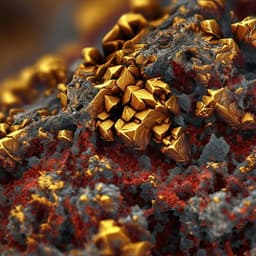
Engineering and Technology
Acoustic microbubble propulsion, train-like assembly and cargo transport
J. Janiak, Y. Li, et al.
Discover how researchers Jakub Janiak, Yuyang Li, Yann Ferry, Alexander A. Doinikov, and Daniel Ahmed are harnessing acoustic microbubble propulsion to control microparticle mobility in viscous fluids. This innovative approach could revolutionize applications in microfluidics, biology, and biomedical technologies.
Playback language: English
Related Publications
Explore these studies to deepen your understanding of the subject.







